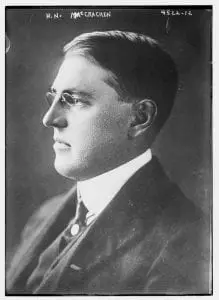Legends of Dutchess County, NY: Digitized Ancient Documents Awaken Stories of the Past
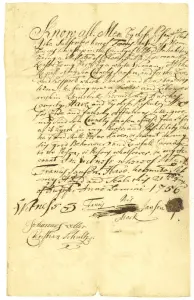
In August 1759, Cornelius Jansen, an enslaved man, presented manumission papers to a Dutchess County court hoping the words would compel the court to grant his freedom from slavery. What makes this case different from so many others? Cornelius’ white father and legal “owner,” Francis Jansen, wrote the papers petitioning for his son’s freedom, completing them with the family seal. The petition was successful; Cornelius was granted freedom.
Cornelius’ story – and many others from the 18th century Hudson Valley – are being saved from the ravages of time and made widely accessible online through a massive digitization effort by the Dutchess County Department of History and the Dutchess County Clerk’s office.
In today’s post, we take a peek into the intriguing history of the Ancient Documents Collection (1721-1889) and its path to digitization.
Let’s get MacCraken With the Story!
In 1911, a catastrophic fire on the third floor Assembly Library of the New York State Capitol Building damaged or destroyed a large number of the state’s Revolutionary War and Colonial Era records. Post-disaster, all New York State records dated prior to 1911 received rare and historic status due to the massive loss of artifacts.
The 500,000-page Ancient Documents Collection includes legal records such as bonds, arrest warrants, land records, mortgage documents, court records and more. All are in varying sizes and fragility levels. The mass of documents from the Court of Common Pleas and General Sessions remained relatively untouched and unorganized until 1954 when then-County Clerk Frederic A. Smith enlisted the help of retired Vassar College President Dr. Henry MacCracken to examine the collection.
MacCracken’s involvement gave the collection some publicity and the records became popular with genealogists as well as academic and historic researchers the world over.
From the Archives to the Monitor Screen
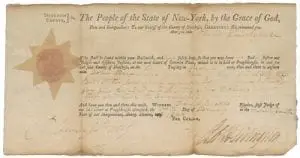
Decades later, the county decided that digitization would answer their three main collection goals:
- Reduce physical contact with the originals to prevent handling disintegration
- Create archive-quality digital images
- Share the collection electronically, allowing researchers around the globe access to documents
“The Ancient Documents Collection is the most sought-after holding in the Dutchess County Archives.” said Dutchess County Clerk Bradford H. Kendall, “Granting proper access to it and ensuring the collection’s long-term survival is a major priority for this office.” In 2012, Kendall and Dutchess County Executive Marcus J. Molinaro revived the office of Dutchess County Historian in part to address the challenges facing the Ancient Documents Collection.
According to current Dutchess County Historian William P. Tatum III, PhD., the MacCracken index heavily influenced how records would be digitized nearly 58 years later. “[MacCracken] launched us on the path towards digitization by providing us with a basic records scheme to employ,” remarked Tatum.
The most impactful choice MacCracken made was recording metadata at the document level.
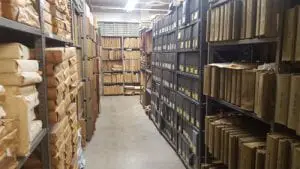
Tatum explains, “Having an index with this item-level detail is rare for most collections and makes the online database exceedingly user-friendly. We’ve gotten many positive responses on how quickly items can be searched with this structure.” I can attest to Tatum’s assessment as it took less than 10 seconds to find Cornelius’ manumission papers after just searching his name (deciphering the 18th century penmanship was not nearly as easy!).
While helpful to researchers, the metadata detail has slowed down the county’s timeline as 89 years of records (nearly a third of the total collection) were excluded from the original index. These records still needed to be cleaned, indexed at the same level to keep consistency and rehoused into new archival boxes before digitization. In 2016, Dutchess began work on these materials as well as pulling materials throughout the collection that were in need of conversation prior to scanning.
A Digitization Journey
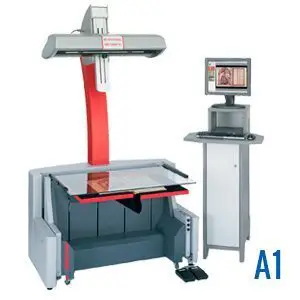
To assist with the collection digitization efforts, Dutchess County has been awarded several grants from New York State Archives’ Local Government Records Management Improvement fund. The project has been segmented into manageable increments that can be pursued as funding allows. Outsourced digitization was elected to accelerate the timeline and ensure that the fragile documents are handled by experienced operators. Since 2013, several different digitization vendors have participated in the project.
In 2018, Crowley Imaging, The Crowley Company’s conversion services bureau, was chosen for a 15,000-page portion of the overall digitization project. “Everything we expected and needed was delivered by Crowley with the first image sample benchmark.” Tatum impresses. “The execution was flawless and an open dialogue was kept throughout the project, which we found reassuring.
The advantage we’ve noted with Crowley has been the superior image technology provided by their Zeutschel scanners. The image quality and speed at which the project was digitized was truly revolutionary.”
Dutchess County is very familiar with the Zeutschel scanner brand as the Archivist’s Office purchased an OS 14000 A0 scanner in early 2018 to assist with in-house other archival capture projects.
Looking Forward
As of this post, document scanning has encompassed 57,000 digital images that have been completed and uploaded to the Ancient Documents Portal, along with word-searchable scans of the original index documents. A further 60,000 digital images will be uploaded once a final check of their metadata is complete. Tatum estimates that the remainder of the project will take another decade. Once this main collection is complete, Dutchess County will move on to restoring and digitizing those documents from the collection that require conservation before they can be scanned.
Beyond the individual tales that the collection tells, it is an interesting look at daily settler life and gives small details about early citizens and the issues that were court-worthy (stealing horses and timber were seemingly very common).
Preserve Ancient History Before It’s Too Late
Stories of the past can help us create a better tomorrow. They provide us with an opportunity to see how the world has evolved and help to ensure that mistakes are not repeated. Crowley’s experienced imaging experts, well-rounded digitization solutions and network of industry professionals can support first-time and ongoing digitization projects. For more information on the conversion services offered by Crowley Imaging or the scanners that can be purchased for your own digitization efforts, please call (240) 215-0224 or click here.


